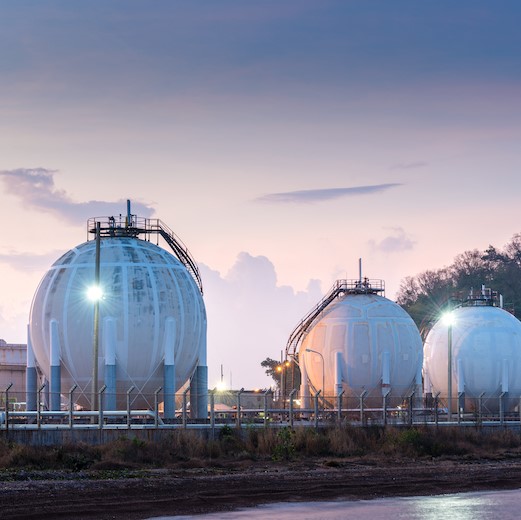United Energy, Power LNG Merge to Expand U.S. Small-Scale LNG Hubs
(P&GJ) — United Energy LNG and Power LNG have agreed to merge, creating a single company—United Energy LNG (UE LNG)—focused on small-scale liquefied natural gas projects for industrial, power-generation and transport users across North America.
The combined firm inherits three LNG production sites that are moving through front-end engineering. FEL-1 work has begun at the first location in Houston, Texas; a second, undisclosed site is also under evaluation, and a third site at Independence, Kansas is slated to enter FEL-1 later this month.
“While the majors are focused on megaprojects, we’re deploying modular, nimble solutions that get LNG to the people and industries who need it now,” said Brian Guinn, Chief Executive Officer of United Energy LNG.
Modular Strategy
UE LNG plans to use factory-built liquefaction units that can be installed quickly and scaled with demand. The approach relies on so-called “virtual pipelines”—trucked or rail-shipped LNG—to reach customers that lack pipeline connections.
“This merger represents the alignment of speed, innovation, and execution,” said Austin Terry, CEO of Power LNG. “By combining our development and operational expertise with United Energy’s capital platform, we’re unlocking a scalable model for delivering LNG where it’s needed most.”
Project Scope
- Active sites: Houston (TX), a confidential Gulf Coast location, and Independence (KS)
- Target capacity: Up to 540,000 tonnes per year across the three plants
- Estimated cost: $240 million–$270 million
- Financial timeline: First three facilities expected to reach final investment decision by Q1 2026 and enter service by Q1 2027
United Energy LNG’s parent company, listed on the U.S. over-the-counter market (OTCMKTS: UNRG), will retain public-market access to help fund construction.
Market Outlook
Company projections put the addressable domestic market for distributed LNG at more than 2 Bcf-equivalent per year—roughly a US$3 billion opportunity among power generators, heavy-transport fleets and off-grid industrial sites.
“This is just the beginning,” Guinn said. “By 2028, we aim to operate a network of scalable LNG hubs serving a portfolio of contracted customers across the U.S., turning America’s natural gas into clean, distributed power for everyone.”
Related News
Related News

- Enbridge Plans 86-Mile Pipeline Expansion, Bringing 850 Workers to Northern B.C.
- Intensity, Rainbow Energy to Build 344-Mile Gas Pipeline Across North Dakota
- U.S. Moves to Block Enterprise Products’ Exports to China Over Security Risk
- 208-Mile Mississippi-to-Alabama Gas Pipeline Moves Into FERC Review
- Strike Pioneers First-of-Its-Kind Pipe-in-Pipe Installation on Gulf Coast with Enbridge
- U.S. Pipeline Expansion to Add 99 Bcf/d, Mostly for LNG Export, Report Finds
- A Systematic Approach To Ensuring Pipeline Integrity
- 275-Mile Texas-to-Oklahoma Gas Pipeline Enters Open Season
- LNG Canada Start-Up Fails to Lift Gas Prices Amid Supply Glut
- Kinder Morgan Gas Volumes Climb as Power, LNG Demand Boost Pipeline Business





Comments